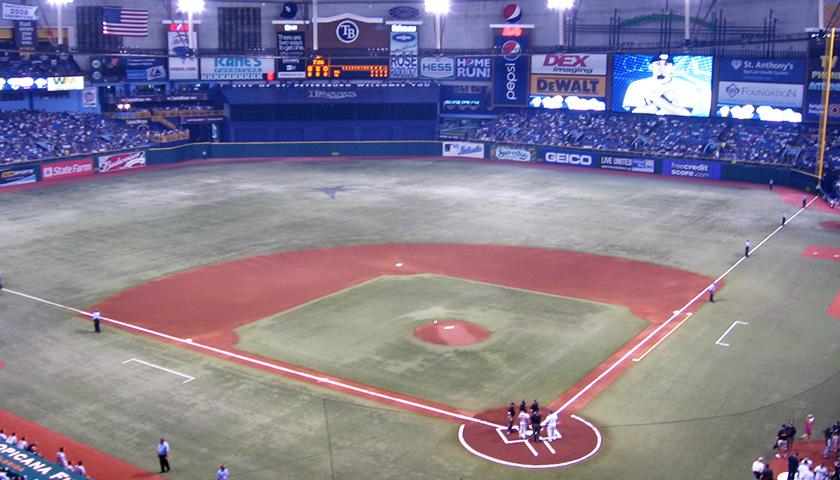by Andrew Powell
While the owners of the Tampa Bay Rays want a new stadium and a plan could be approved as soon as this fall, state funding will likely not be forthcoming due to Gov. Ron DeSantis’ policy against public funding of professional sports stadiums.
Team owner Stuart Sternberg has denied rumors that the team would leave St. Petersburg’s Tropicana Field, but team officials want a replacement for the domed stadium built in 1990 and home to the team since their debut in 1998. The team’s lease at Tropicana Field expires in 2027.
In 2022, DeSantis vetoed $35 million in funding while signing the year’s state budget to help build a spring training center for the Rays. He explained in his veto message that “we were not in a situation where use of tax dollars for a professional stadium would have been a prudent use.”
St. Petersburg Mayor Kenneth Welch chose Hines and the team as the master developer of the Historic Gas Plant Redevelopment Project which will include a stadium and an entertainment district with a total cost of $4.6 billion. Hines and the Rays will raise $1.8 billion through financing and the rest of the money will come from other local sources.
“I am naming the partner and a concept for a project that will last over a decade and will span multiple administrations,” Welch said during his State of the City address on January 30. “As the plan moves forward under my administration, we will adhere to our model of inclusive governance — asking for input from all stakeholders, including the community, to ensure that we are meeting the goals of this development. I know our St. Pete community will stay engaged and informed as this project takes shape.”
The land surrounding the $1 billion ballpark will be leased for a 30-year term and will be open to the public when not in use for baseball. The plans include a mixed-use development with apartments, hotels, restaurants and shopping.
In its proposal, Hines, the Rays and their partners said that they will collectively invest over $1.8 billion into the project, including $180 million directly from Hines and the team. The proposal also states that the developers assume that the cost of infrastructure will be financed through a combination of tax increment financing or “other creative state or local financing tools that are available to finance infrastructure projects.”
The city has said a minimum of $75 million in downtown property tax revenue would be spent on infrastructure, including stadium improvements. The team, however, has asked the city to come up with $150 million in public funding for infrastructure.
The proposal suggested the Gas Plant District move out of the Intown Community Redevelopment Area, a type of special tax district where Tropicana Field is located, and into a new special tax district that Pinellas County commissioners would need to approve.
One of the main sources of funding for the Rays is a 6% tax on hotel stays and short-term rental properties. In the past year, tax revenue generated from the tax reached over $94 million.
While the state may not be allocating funds to the Rays, the county can use tourism tax money for the construction or renovations of a professional sports stadium by paying down debt on city bonds issued to pay for it.
The city and county hired a New York investment bank to help with the deal, and it estimated that local governments could raise $9.4 million in annual revenue and $129 million over the course of 30 years. This would include income from rentals and events, parking, sales tax on concessions, and ticket surcharges.
According to the project timeline on the St. Petersburg Mayor’s Office website, the completed development agreement will be presented to the City Council for approval in September or October and if approved, the development agreement will be executed in the summer of 2024.
– – –
Andrew Powell is a contributor to The Center Square.
Photo “Tropicana Field” by EaglesFanInTampa. CC BY-SA 3.0.





